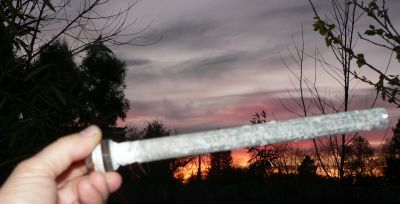 The old anode.
The old anode.
|
RV Maintenance Hot Water |
Hot Water Tank
Water Heater
 The old anode.
The old anode.
|
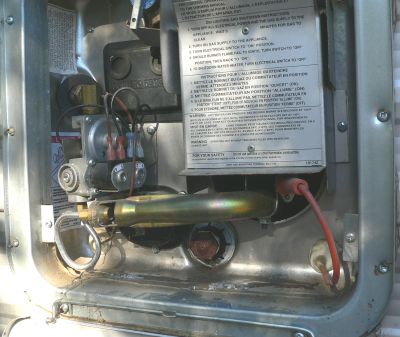
|
|
Proverbs 18:22 |
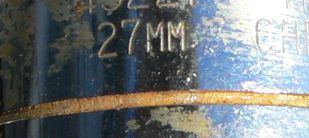 You can use a 27mm socket.
You can use a 27mm socket.
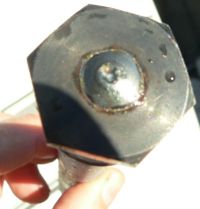
The new anode, two weeks old. |

The old anode, one year old. |
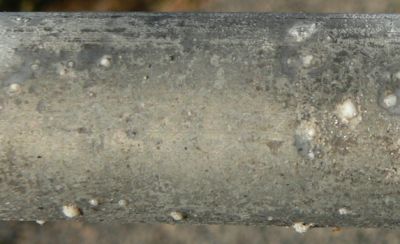
The new anode, two weeks old. |
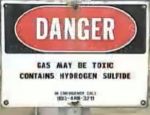 I am not a chemist, but here is what seems to be happening...
I am not a chemist, but here is what seems to be happening...|
The fear of the LORD is the beginning of knowledge,
but fools despise wisdom and instruction.
Proverbs 1:7 |

|
|
|
|
|

|
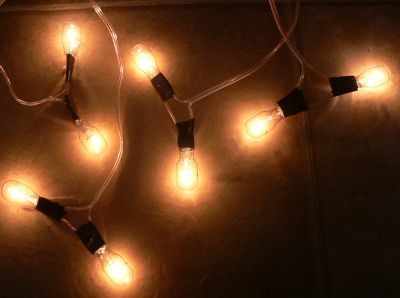
|
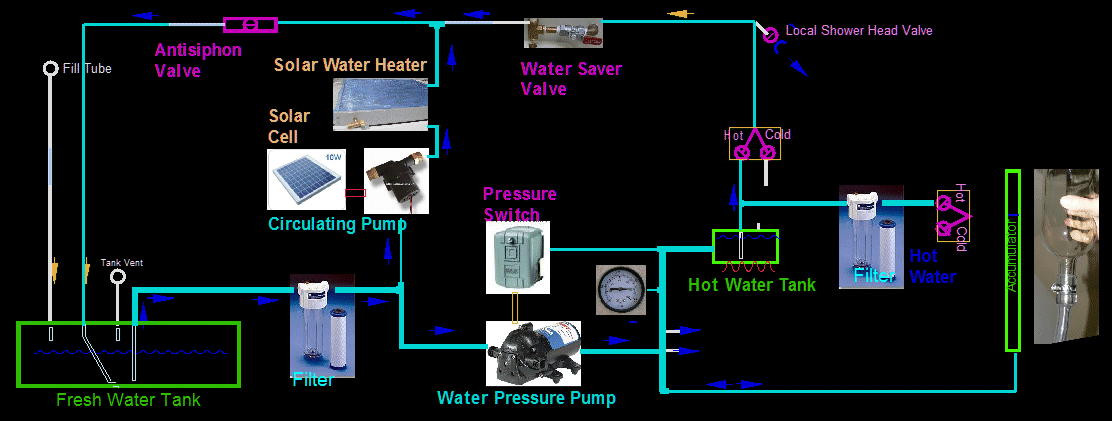
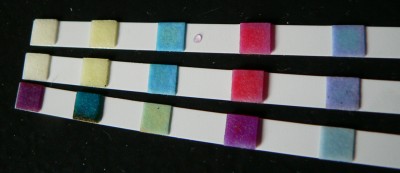 Swimming Pool strips
Swimming Pool strips
|

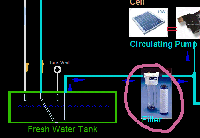

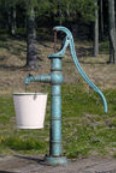 Free Cl: not readable, less than 0.2 ppm
Free Cl: not readable, less than 0.2 ppm  Here is another at same well:
Here is another at same well: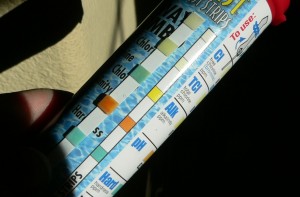 Here is another well-2:
Here is another well-2:
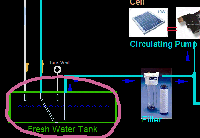
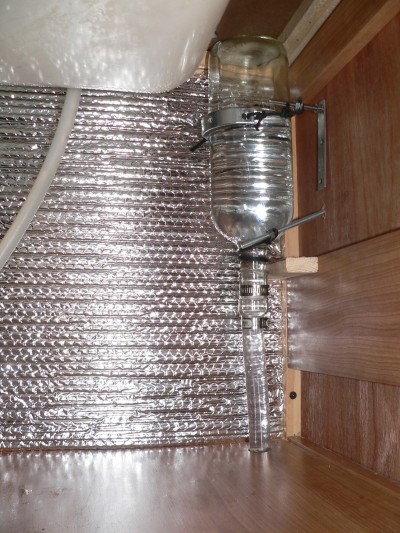 Here is my glass accumulator at installation time. Notice the bottom section of vinal:
It is crystal clear. No bacteria.
Here is my glass accumulator at installation time. Notice the bottom section of vinal:
It is crystal clear. No bacteria.
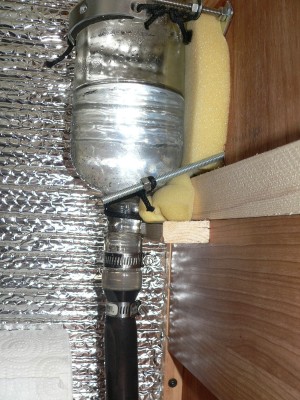 After a dozen trips, this is what it looked like: Black as can be.
You can not see through it even a little.
I took a vinal line apart elsewhere, stuck my finger inside the line. The black stuff was
slimy. It is bacteria. Not all vinal was attacked equally. This section was the worst.
After a dozen trips, this is what it looked like: Black as can be.
You can not see through it even a little.
I took a vinal line apart elsewhere, stuck my finger inside the line. The black stuff was
slimy. It is bacteria. Not all vinal was attacked equally. This section was the worst.

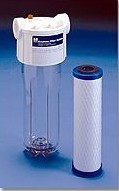
|
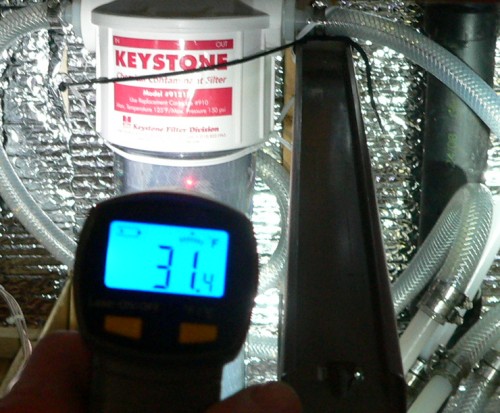
Here the Keystone (second filter) is below freezing, 31.4F degrees. Crystals are starting to form, but the case is holding. |

This is the "container" or Bowl. It can house gobs of different kinds of filter inserts. |
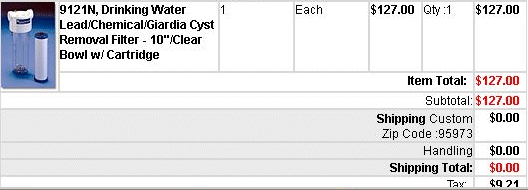
This is the expensive filter, but it is cheap for what it does. I ordered the 910 carbon insert that does a fantastic job. |
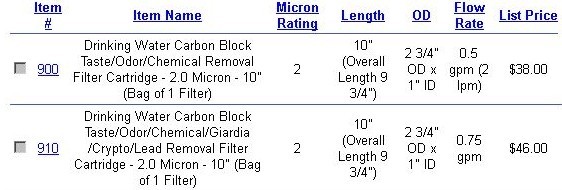 This is for my reference...
This is for my reference...Reorder the 910 insert. |
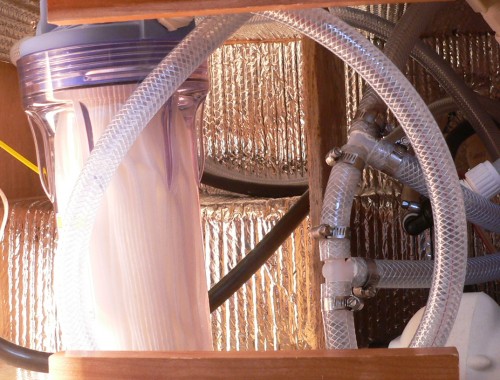 The Pentek, the First Filter, or Prefilter of a two stage system.
This filter is immediately from the 60 gallon tank. It is operated in vacuum mode, where water is pulled instead of pushed.
The Pentek, the First Filter, or Prefilter of a two stage system.
This filter is immediately from the 60 gallon tank. It is operated in vacuum mode, where water is pulled instead of pushed.
|

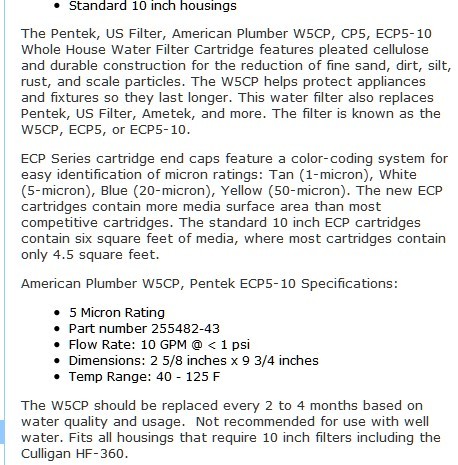
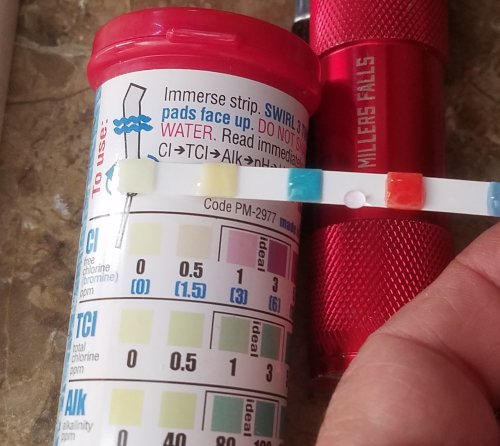 Free Chlorine or Bromine ppm.
Free Chlorine or Bromine ppm. Total Chlorine ppm.
Total Chlorine ppm.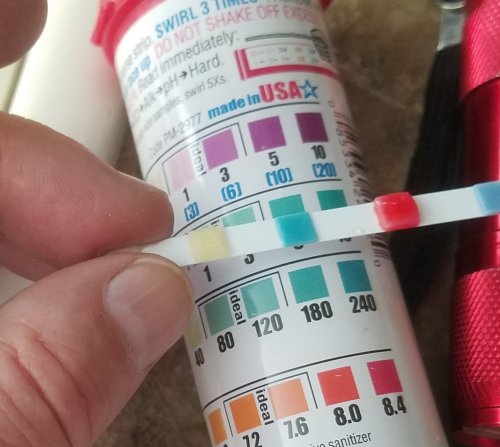 Alkalinity ppm.
Alkalinity ppm. The PH is about 8.1, very very alkaline.
The PH is about 8.1, very very alkaline.
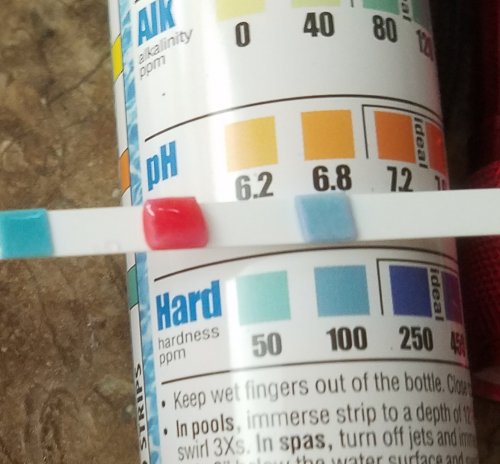 Hardness ppm. Mostly calcium and magnesium. For pools should be 200 to 400 ppm.
Hardness ppm. Mostly calcium and magnesium. For pools should be 200 to 400 ppm.